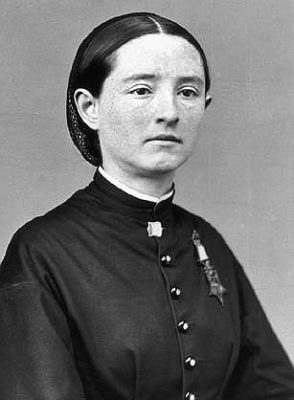Main Facts
To this day, Mary Edwards Walker remains the only woman awarded with the Medal of Honor after offering remarkable services as an assistant surgeon during the U.S. civil war. She held many speeches about women’s rights. She is remembered for her consistent refusal to be placed in a disadvantageous position because of her gender.
Early Years and Schooling
Mary was born on November 26th, 1832, in New York. She attended the Falley Seminary in New York. In 1855, she was awarded a Doctor of Medicine degree after completing her studies at Syracuse Medical College. Then she moved to Ohio, where she started practicing medicine. She soon returned to New York and married Albert Miller, who was also a doctor.
Services during Tumultuous Times
In 1861, the Civil War broke out. Mary started offering her services as a volunteer nurse. In 1862, she temporarily stopped volunteering to obtain another medical degree. When she returned, she worked on the battleground, in tent hospitals in Virginia. In the fall of 1863, in Tennessee, she was hired as an assistant surgeon in the Army of the Cumberland.
In April 1864, she was held prisoner by the Confederate Army. She gained her liberty in August of that same year. She returned to Washington, D.C., for a short period. In the fall of 1864, she was employed as an ‘’acting assistant surgeon’’ with the Ohio 52nd infantry. She started overseeing a hospital for female prisoners and then an orphanage. She retired in June 1865. Later that year, as an acknowledgement of her important services during wartime, she was awarded the Medal of Honor for Meritorious Service.
Post-War Activism
After the war, she gave lectures on women’s dress reform, women’s suffrage, temperance, and health care. She joined other leaders of the women’s rights movement, such as Susan B. Anthony and Elizabeth Cady Stanton. She was often taken into custody for adopting a typically masculine dress code. She strongly defended her right to wear any type of clothes she regarded as suitable. She was not in favor of a suffrage amendment, as she considered that this right was already granted constitutionally.
Medal of Honor
In 1917, the U.S. government revised the criteria for the Medal of Honor, and as a result, she was excluded from the Army Medal of Honor Roll. In spite of this, she kept wearing it until her death, on February 21st, 1919, in New York. Fortunately, in 1977, about six decades after her death, her Medal of Honor was reinstated by President Jimmy Carter.



0 Comments